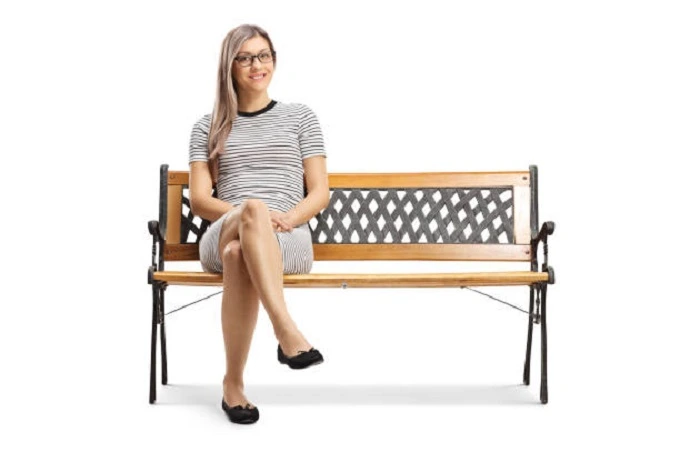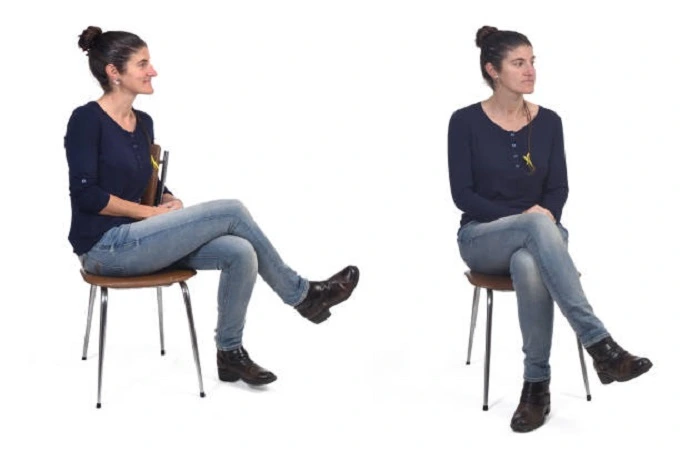Reasons why you shouldn’t cross your legs

One of the most popular poses among those working in offices is the “leg on leg” pose. Crossing our legs makes sitting, which is in and of itself, an unnatural position for a person, and it also prevents our bodies from functioning normally. This is true even if we ignore the fact that sitting is an abnormal position. The article contains several convincing reasons proving why the practice of sitting with one leg on top of the other must be abandoned, and these reasons have been collected here for your ease.
9 reasons why you shouldn’t cross your legs

1. The likelihood of experiencing a pelvic distortion rises
When we sit with our legs crossed for extended periods, not only does this cause the pelvis to become malformed, but it also causes certain muscles to become overworked. In addition, because you have been sitting in this position for such a long time, you may experience what is known as “starting pains” when you get up from a chair.
The following is a list of the most common symptoms associated with pelvic misalignment:
- pain while walking;
- bladder problems and bowel dysfunction;
- episodic back, neck, and knee pain;
- frequent falls and unsteady movements.
2. The intervertebral discs are erased
A “leg on leg” position maintained for an extended period can bring on the onset of pain in the lower back. This is because the muscles in this position are overstretched, and there is a perceptible shift in the axis of the spine when the body is in this position. The load we put on the spine is quite high when working at the computer. The “leg on leg” pose only makes the situation even riskier. Because of this, the spinal discs in between the vertebrae in the back begin to shrink, leading to chronic back pain.
3. Varicose veins risk increases
The venous system in the lower extremities is affected by any statistical loads, such as working on the legs or sitting at a computer for long periods. When seated for an extended period in the “leg on leg” position, blood flow to the extremities is reduced. As a result, there is a standstill in the circulation of the veins. In addition, the popliteal fossa is bereft of muscles, and the tendons, veins, and blood vessels located there are pretty close to the skin’s surface.
Make it a priority to schedule warm-up breaks into your workday so you can head off any potential issues. This will improve blood flow and cause the brain to become more oxygenated.

4. Foot weakness develops
Sitting with one leg on the other can lead to problems with the spine and weakness in the flexion of the foot, which can be caused by sitting in this position for long periods. This happens because when we put one leg on top of the other, there is compression of the peroneal nerves and the vessels that feed them. This results in the symptoms that you are describing. When we assume a similar pose, we experience tingling and numbness in the lower leg. This is because the development of weakness in the flexion of the foot is directly related to the condition.
When a problem goes untreated, it can lead to a deformity of the foot and a steppage, an abnormal gait in which a person raises one leg very high, throws it forward, and abruptly lowers it.
5. Increased risk of blood clots
Inverting one leg over the other disrupts the normal blood circulation throughout the body. And this, in turn, can result in the formation of blood clots in the affected area. Those who already have any problem with their blood vessels are at especially high risk. In this scenario, maintaining an active lifestyle and paying attention not only to one’s posture but also to the position in which one’s legs are placed is of the utmost significance.
6. The posture gets even worse
Another significant drawback of the “leg on leg” pose is that maintaining it for an extended time can negatively impact one’s posture. After a while, the shoulders start to stick out further, the body begins to bend, and the lower part of the spine starts to bend. The accumulation of all of these characteristics ultimately results in the development of serious conditions like osteochondrosis, herniated discs, arthrosis of the joints, and protrusions.
7. The risk of premature birth rises
Pregnant women should be mindful of their posture at all times, including when seated. Because maintaining the same position for an extended period places a significant amount of strain on the muscles and interferes with the normal flow of blood. This can result in the development of edema, the progression of varicose veins, and even premature birth in extreme cases.
8. Blood pressure rises
John Mendola, a well-known cardiologist, has a habit of crossing his legs when sitting. He is convinced that this contributes to the fact that his veinous blood returns more actively to his heart, which in turn causes his blood pressure to rise. The good news is that simply changing one’s body position is all required to return blood pressure to normal. In addition, to assume a posture that is more normal and appropriate from an anatomical perspective.

9. Some nerves are damaged
One of the nerves in the lower leg is called the fibular nerve, which is responsible for the foot’s inward rotation and the big toe’s backward flexion. In addition, it plays a role in transmitting both sensations and motor impulses to the lower part of the leg. An injury to the peroneal nerve frequently results from sitting in an awkward position for an extended period, including leg to leg. A traumatologist can diagnose the issue and help patients find solutions to better deal with it.




